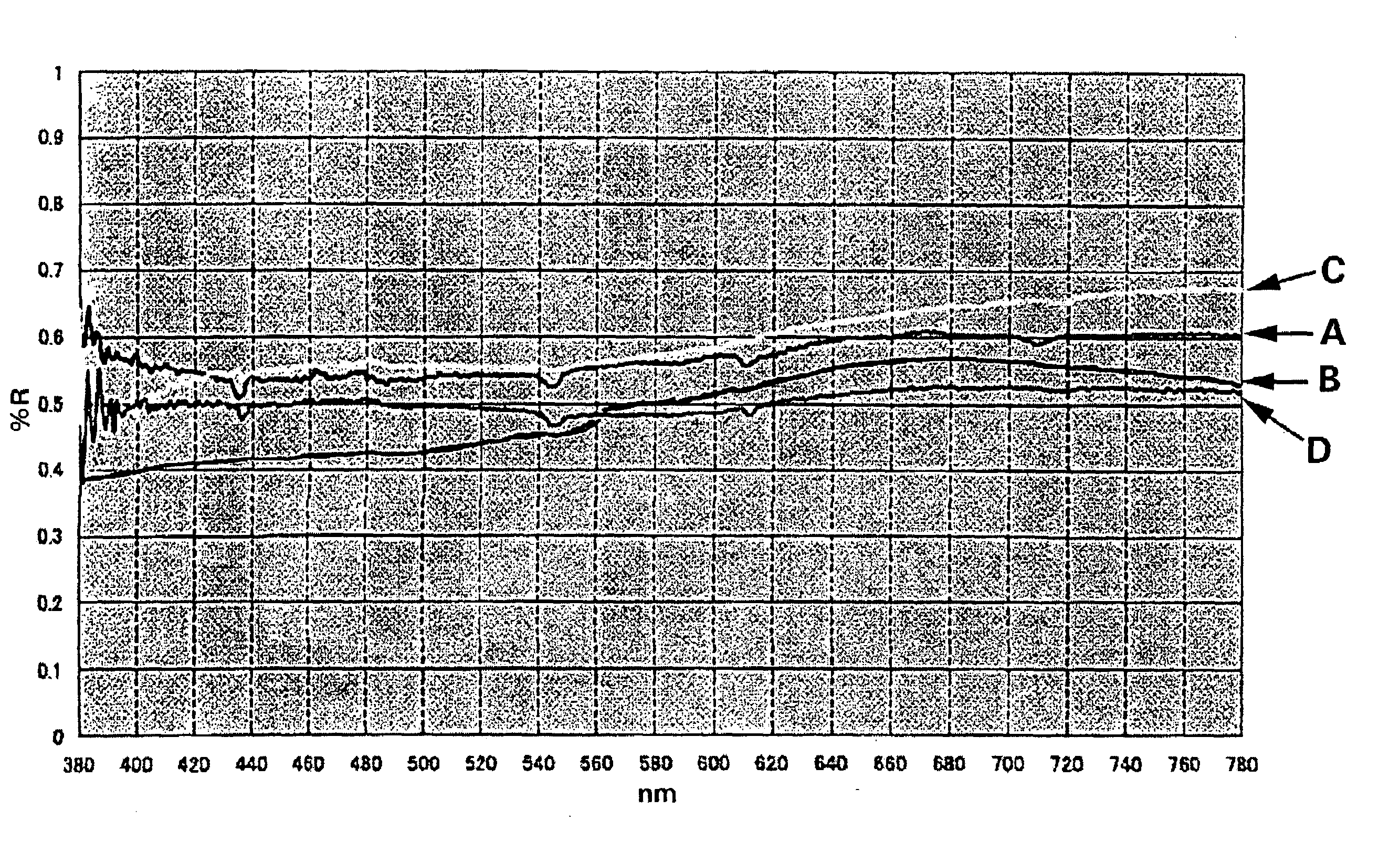Paint for preventing surface reflection
- Summary
- Abstract
- Description
- Claims
- Application Information
AI Technical Summary
Benefits of technology
Problems solved by technology
Method used
Image
Examples
example 1
[0033]A black paint is prepared by mixing an additive in a ratio of 5 parts by weight or more, preferably 6 parts by weight or more, more preferably 7 parts by weight or more, with a solution, in a ratio of 100 parts by weight, having dissolved therein an acrylic resin that is a base and agitating. A dip coating method is preferably used as a method of applying a black paint. However, the method is not limited thereto and its examples that are good include wet methods such as a dipping method, a spin coating method and a bar coating method (solution coating methods) and a brush painting method.
example 2
[0034]A black paint is prepared by mixing an additive in a ratio of 5 parts by weight or more, preferably 6 parts by weight or more, more preferably 7 parts by weight or more, with a solution, in a ratio of 100 parts by weight, having dissolved therein a modified vinyl acetate resin that is a base and agitating. A dip coating method is preferably used as a method of applying a black paint. However, the method is not limited thereto and its examples that are good include wet methods (solution coating methods) such as a dipping method, a spin coating method and a bar coating method and a brush painting method.
example 3
[0035]A black paint is prepared by mixing an additive in a ratio of 5 parts by weight or more, preferably 6 parts by weight or more, more preferably 7 parts by weight or more, with a solution, in a ratio of 100 parts by weight, having dissolved therein a specific alkyd-melamine resin that is a base and agitating. A dip coating method is preferably used as a method of applying a black paint. However, the method is not limited thereto and its examples that are good include wet methods (solution coating methods) such as a dipping method, a spin coating method and a bar coating method and a brush painting method.
PUM
| Property | Measurement | Unit |
|---|---|---|
| Nanoscale particle size | aaaaa | aaaaa |
| Nanoscale particle size | aaaaa | aaaaa |
| Wavelength | aaaaa | aaaaa |
Abstract
Description
Claims
Application Information
 Login to View More
Login to View More - R&D
- Intellectual Property
- Life Sciences
- Materials
- Tech Scout
- Unparalleled Data Quality
- Higher Quality Content
- 60% Fewer Hallucinations
Browse by: Latest US Patents, China's latest patents, Technical Efficacy Thesaurus, Application Domain, Technology Topic, Popular Technical Reports.
© 2025 PatSnap. All rights reserved.Legal|Privacy policy|Modern Slavery Act Transparency Statement|Sitemap|About US| Contact US: help@patsnap.com


